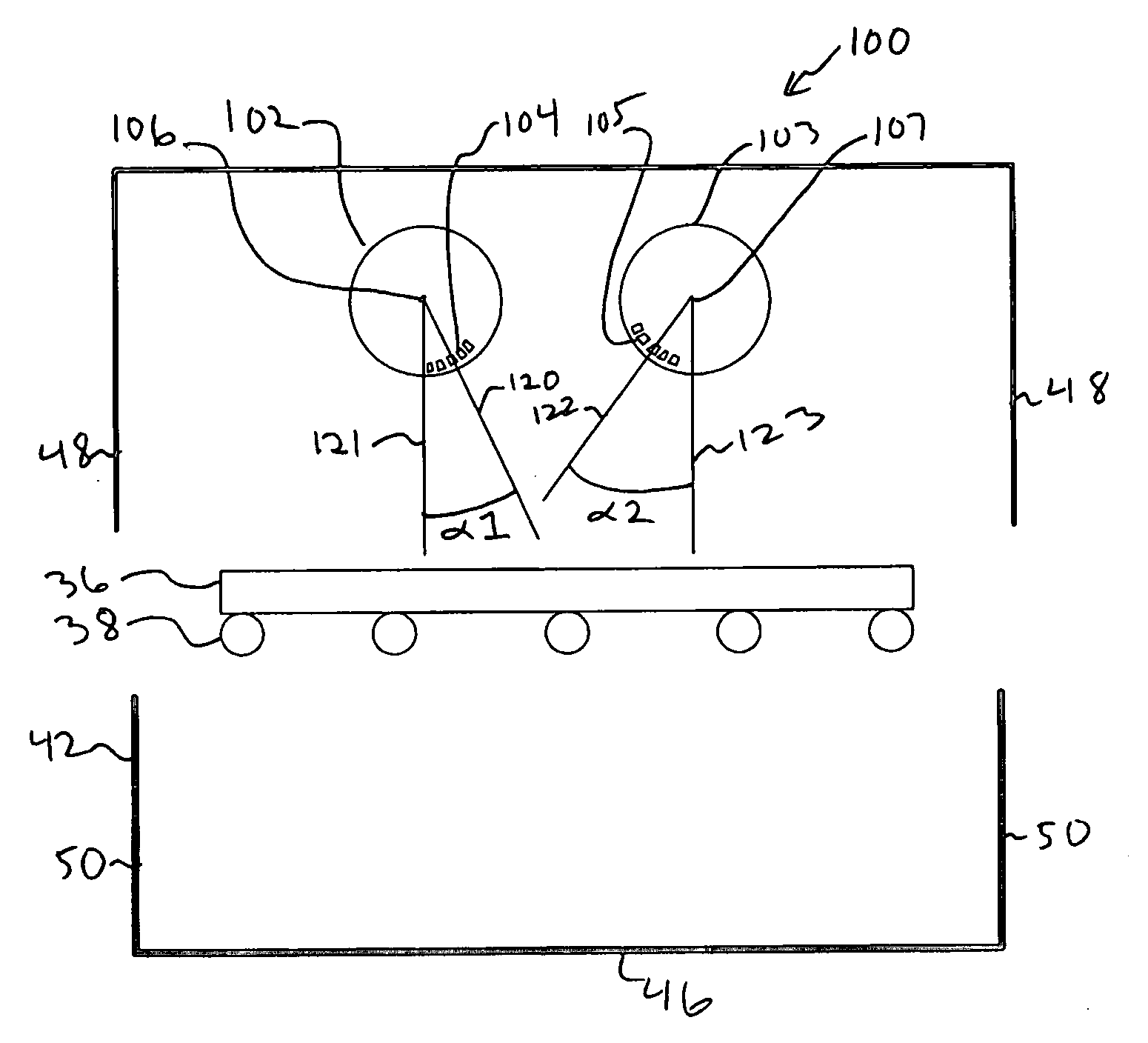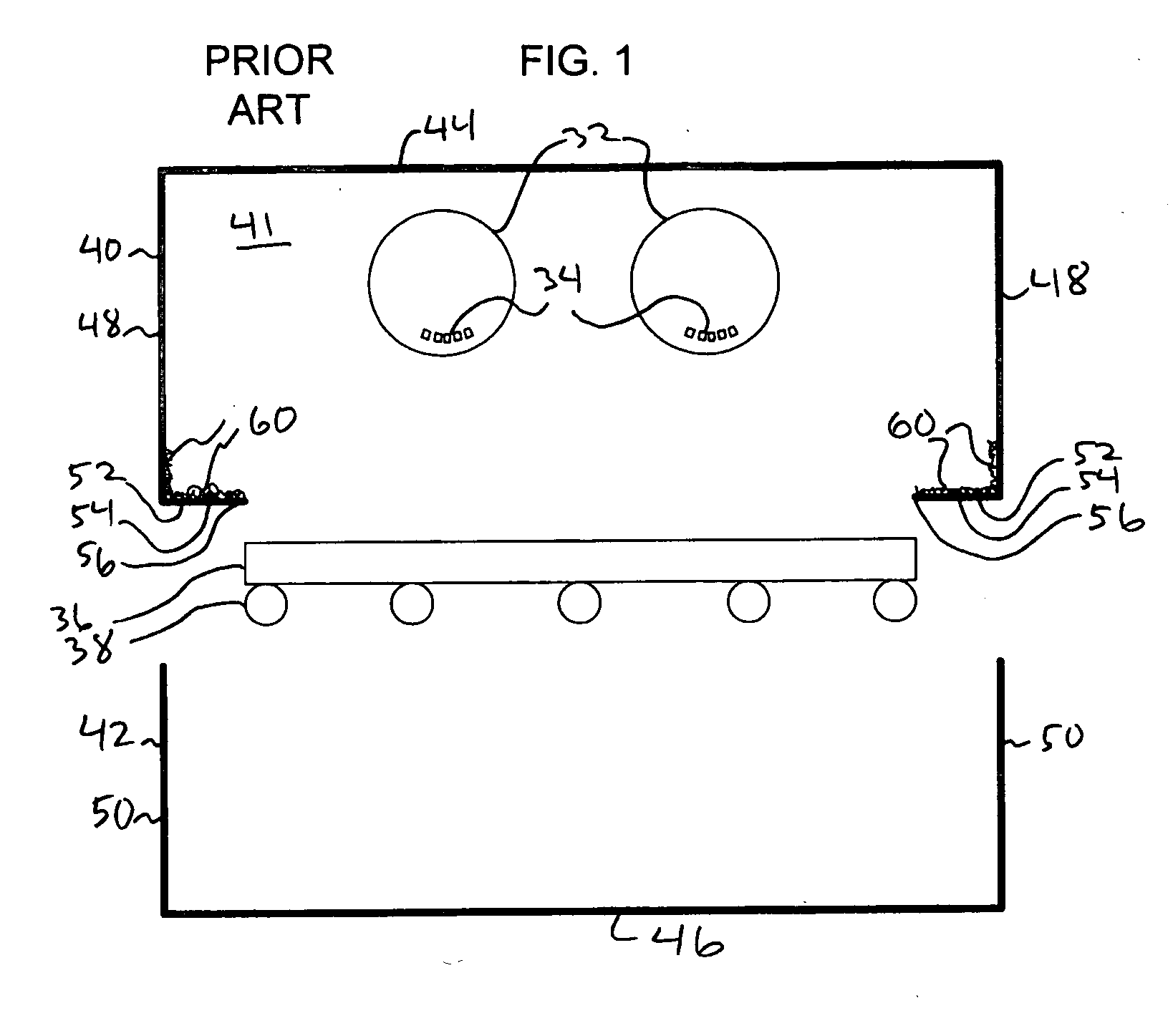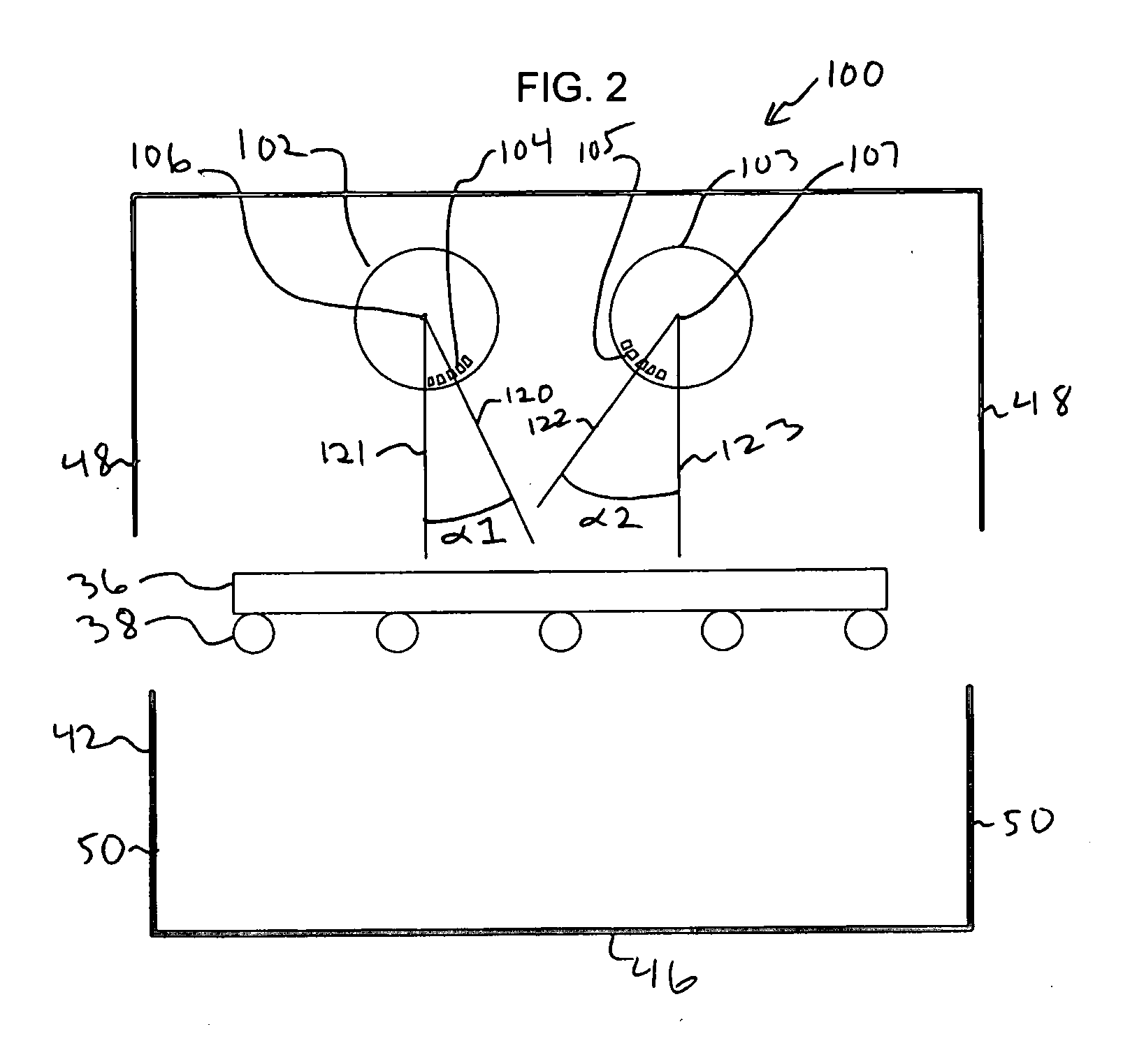Reduced maintenance sputtering chambers
a sputtering chamber and maintenance technology, applied in the direction of vacuum evaporation coating, electrolysis components, coatings, etc., can solve the problems of significant loss of coating, difficult and time-consuming removal, and significant overcoating, so as to reduce the amount of unwanted sputtering and overcoating
- Summary
- Abstract
- Description
- Claims
- Application Information
AI Technical Summary
Benefits of technology
Problems solved by technology
Method used
Image
Examples
Embodiment Construction
[0017] The following detailed description should be read with reference to the drawings, in which like elements in different drawings are numbered identically. The drawings, which are not necessarily to scale, depict selected embodiments and are not intended to limit the scope of the invention. Several forms of invention have been shown and described, and other forms will now be apparent to those skilled in art. It will be understood that embodiments shown in drawings and described above are merely for illustrative purposes, and are not intended to limit scope of the invention as defined in the claims which follow.
[0018]FIG. 1 illustrates a prior art sputtering chamber 30 having a top portion 40 and a bottom portion 42. Top portion 40 includes generally an interior 41, a ceiling 44, side walls 48, and lower ledges or spall shields 52. Spall shield 52 may be seen to have an inward-most extent or tip 56 and a ledge portion 54. Spall shields 52 may be seen to be substantially horizont...
PUM
| Property | Measurement | Unit |
|---|---|---|
| angles | aaaaa | aaaaa |
| angles | aaaaa | aaaaa |
| angles | aaaaa | aaaaa |
Abstract
Description
Claims
Application Information
 Login to View More
Login to View More - R&D
- Intellectual Property
- Life Sciences
- Materials
- Tech Scout
- Unparalleled Data Quality
- Higher Quality Content
- 60% Fewer Hallucinations
Browse by: Latest US Patents, China's latest patents, Technical Efficacy Thesaurus, Application Domain, Technology Topic, Popular Technical Reports.
© 2025 PatSnap. All rights reserved.Legal|Privacy policy|Modern Slavery Act Transparency Statement|Sitemap|About US| Contact US: help@patsnap.com



